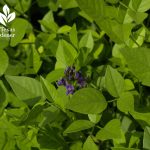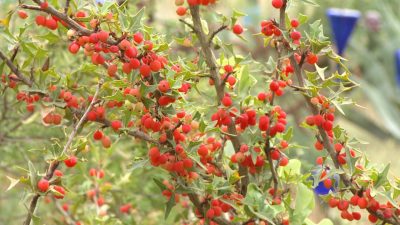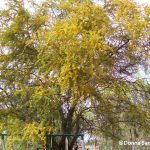Why do we firm the soil around new plantings?
And if firming the soil is good, why are we not supposed to walk through our garden beds?
When digging a new hole for a plant, we’re basically destroying a soil structure in that area, so we want to put it back as close as possible to the way it was. Tilled soil has increased fluffiness and larger pore space, which increases the space for air in the soil, which is not necessarily a bad thing especially for a new planting. But those larger air-filled pores are too large to hold on to water, which could very well be the kiss of death for a new transplant in a very short time.
That’s one reason why you should water new transplants every day if not twice a day, for a while. This is about more than just the plant’s lack of roots; it’s about the soil settling and the pore space decreasing over time.
Once the soil has settled back to the way it was before you dug your hole, it’ll begin to get back to the natural structure and water holding capacity that it had due to its natural texture, which is dictated by the amount of sand, silt and clay and organic matter that makes it up.
If you’ve heard of no till farming, you’re familiar with this concept. Disturbing the soil structure as little as possible, except obviously in the planting hole, is best for overall soil structure and overall health.
But there’s also soil compaction to think about. If the soil’s walked on extensively or driven on in the case of construction with heavy equipment, the pore spaces are squeezed together, leaving no space for air and eventually, no space for water either.
Obviously a plant’s roots need water. They also need oxygen to breathe and be able to take up the water and life-giving nutrients that are in the soil. Compacted soil also becomes very hard, making it almost impossible for roots to push out into it. And when roots can’t grow, the rest of the plant’s growth is also impeded.
Lack of rain, especially if you’re unable to irrigate, also leads to soil compaction. Like a sponge when it dries out, your soil shrinks in and out, decreasing pore space and making it very hard to re-wet without squeezing it. And I don’t have to tell you that you can’t squeeze your soil.
During the extended heat and drought of 2011, Central Texas soils became very compacted, adding yet another stressor to plants, especially in natural areas where there was no way to irrigate them and alleviate the problem. So soil compaction should be avoided at all costs.

 Elayne Lansford
Elayne Lansford Michelle Pfluger
Michelle Pfluger Groundcover Plants
Groundcover Plants Daphne Richards
Daphne Richards
 Merrideth Jiles
Merrideth Jiles Drought and Freeze Plants
Drought and Freeze Plants